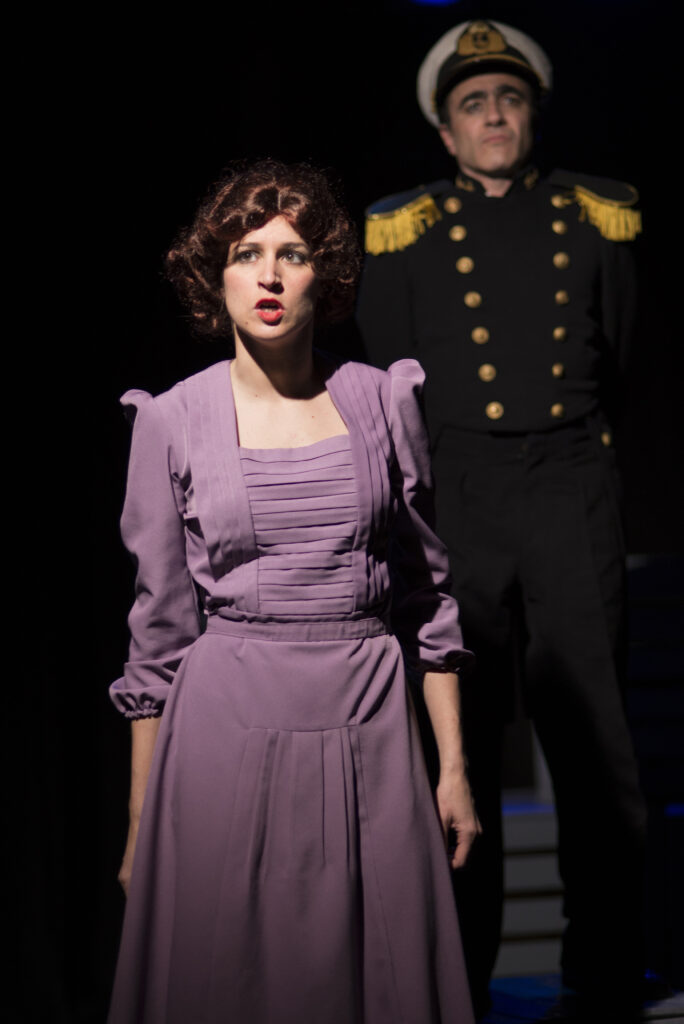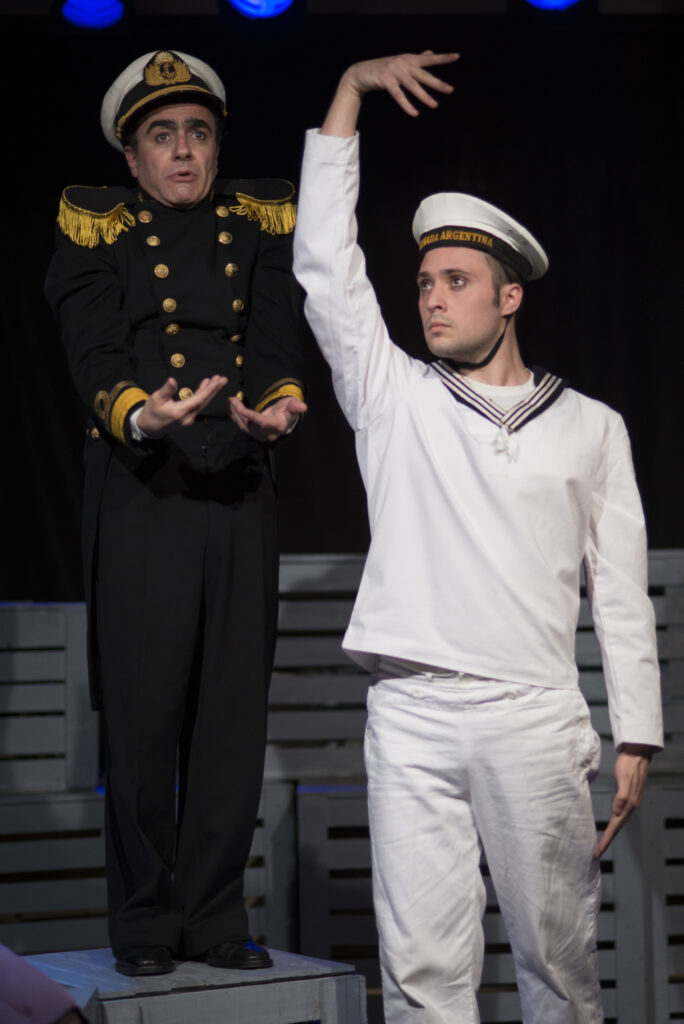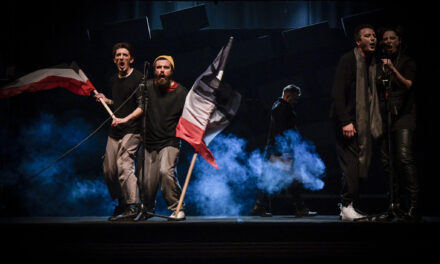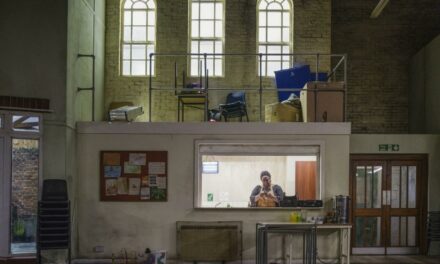Fanny and the Admiral, written by Luis Longhi, premiered in 2016 at La Máscara Theatre, Buenos Aires, Argentina. It was staged again in 2017, in the same theatre, under the excellent direction of Tatiana Santana, and featuring Rosario Albornoz as Fanny Navarro, Luis Longhi as the Admiral, and Lalo Moro and Karina Antonelli as the midshipman and Fanny’s mother, respectively.

Photo by Agustina Luzniak
The production recalls a painful event from the history of the Argentinian political struggle. In June 1955, a criminal bombing of the Plaza de Mayo foreshadowed the uprising that, in mid-September of that year, would force General Perón to leave the presidency. Admiral Isaac Francisco Rojas, vice-president of the coup and the play’s protagonist, was an exalted anti-Peronist who, with General Pedro Eugenio Aramburo, ordered the subsequent executions of Peronist workers in the garbage dump of José León Suárez in Buenos Aires. With the fall of Perón also came the fall of the collective and individual dreams of people who had improved their lives and obtained new rights; among them was the actress Fanny Navarro, a close friend of Eva Duarte (Evita). Her career as an actress extinguished after 1955, Navarro suffered a slow decline that led to several suicide attempts, starvation and, in 1971, her death.
The play’s action is not chronological. It runs through the bombings of Plaza de Mayo, on June 16, 1955, and then moves to later that same year, underlining the Admiral’s obsession with murdering the “fugitive tyrant,” a name given to Perón in the hope of erasing all traces of Peronism in the press, the public vocabulary, and popular memory. To mention Perón or Eva was a taboo, one that is replicated in the play: his name is pronounced on the stage only in shouts that seem to express the fear of its memory or of its return, and Evita is, in the parlance of Rojas, “the little doll.”

Photo by Agustina Luzniak
The powerful scenes not only speak about these historical facts, they also touch deeply intangible aspects not recorded in the official written history. The play shows Rojas’s feelings of hatred for and fear of the return of Perón and Navarro’s feelings of loss and nostalgia. Santana successfully uses the possibility of theatre, which has a qualia lacking in written or verbal discourse. Theatre is capable of displaying on the stage the subjective qualities of feelings and perceptions and of transmitting these sensations to spectators through visuals, lighting, and sound. The characters reveal these intangibles, not verbally describable states, through the rich resources of the scene, which strengthen the functionality of every stage element with the core of the production: to expose the fissure that crosses Argentina’s scene even today.
The antagonism of class and political ideology are marked in Fanny and the Admiral by the costumes, the acting style, and even the musical tastes of both protagonists. Fanny Navarro is a lover and interpreter of tango, which appears linked, in her character, to the memory of better years. For Rojas, the tango, being the music of the people, cannot be considered art. The Admiral instead emphasizes his good musical taste and declares that he prefers Wolfgang Amadeus Mozart and Fokine–Von Weber’s “The Specter of the Rose,” which occupies a central place in Santana’s production. This is sure because it has been said – as the work points out – that it was during this ballet performance that Rojas endorsed the clandestine massacre against twelve Peronist civilians, on June 9, 1956, in the garbage dump of José León Suárez.
How to get these two ideological worlds to dialogue on the stage? Tatiana Santana, the director, found a way to bring together, on the scene, these opposing characters belonging to different and incommensurable worlds that cross Argentina history and contemporary politics. The solution was a double style of acting emphasized by the realistic costumes. The acting style of the admiral and his subordinate have a parodic gesture and tone; Fanny’s and her mother’s styles, in contrast, are melodramatic. The scenography, designed by Andrea Mercado, metaphorically reproduces a ship’s bilge, an almost vacant space with a few wooden boxes, which despite its apparent neutrality reveals the Admiral’s domain over the national space.

Photo by Agustina Luzniak
The play leads us to moments of Argentinian history remembered neither in national celebrations nor in the common versions of history. Such is the case of the massacre of the defenseless people in the main square of the capital of Argentina in June 1955, and the erasure of everything and everyone suspected of Peronism, which continued, until 1983, under the dictatorship of the so-called National Reorganization Process.
Fanny and the Admiral speaks about the present, with the current Argentinian government situated in the same ideological space as the Admiral, and an opposition trying to stop the backward policies of Macri’s right-wing government. Fanny and the Admiral metaphorically – and not so metaphorically – depicts a clear relationship with the recent political context in a country that shows again a deep rupture in society. The fact that the play reminds us of the defenselessness of the unarmed people passing through the square in 1955, who were victims of the bombing, materializes a statement about people who are seeking and struggling to find an effective way to resist the central power today. In the present, Argentinian streets are flooded with protests repressed either by the police or by “legal” measures to punish the workers who participate in strikes or protests; theatrical actions and performances take place in the streets and plazas to encourage resistance against the powerful neoliberal right-wing government allied with corporations, multinationals, and the financial capital. Fanny and the Admiral, by bringing to memory historical facts from the last century, speaks about politics and the making of Argentinian history today.
This post was written by the author in their personal capacity.The opinions expressed in this article are the author’s own and do not reflect the view of The Theatre Times, their staff or collaborators.
This post was written by Lola Proaño Gomez.
The views expressed here belong to the author and do not necessarily reflect our views and opinions.


















